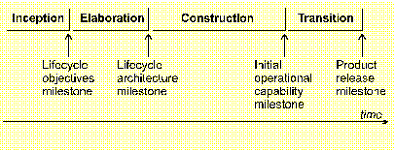|
Development Phases
Applied Software
Solutions have adopted relevant parts from both
Rational's Unified Process and Microsoft's Solution Framework (MSF) to enable
it to implement an Effective Development Process.
The Effective Development Process
is used to ensure that all software projects:
-
Meet Users Requirements
-
Meet Quality Standards
-
Meet Project Deadlines
-
Facilitate Re-use
-
Are Maintainable and Extensible
The Key elements of the Effective
Development Process are:
From a management perspective, the
iterative software lifecycle is decomposed over time in four sequential phases,
each concluded by a major milestone.
The Inception Phase
where we define a 'vision' of the end product and the associated business case,
defining the overall scope of the project.
The Elaboration Phase
where we refine the definition of the product, define and baseline an
architecture, and develop a more precise plan for its development and
deployment.
The Construction Phase
where the product is built, up to the point where it can be put in the hands of
its end-users for the first time.
The Transition Phase
where the product is transitioned to the user community; this includes
manufacturing, delivering, training, supporting and maintaining the product.
To conclude a phase requires an
assessment of whether:
-
The defined objectives have been
met;
-
The defined deliverables have
been completed;
-
The various models have been
updated.
A satisfactory
assessment will allow the project to move to the next phase. Each phase is
essentially a span of time between two major milestones.

One pass through the four phases is a development cycle; each pass
through the four phases produces a generation of the software. Unless the
product "dies," it will evolve into its next generation by repeating the same
sequence of inception, elaboration, construction and transition phases, but
this time with a different emphasis on the various phases. These subsequent
cycles are called evolution cycles. As the product goes through several cycles,
new generations are produced.
|